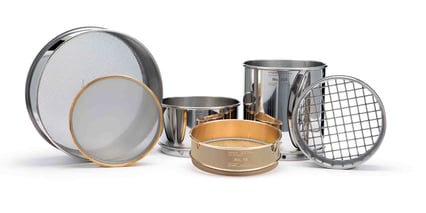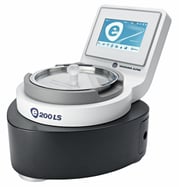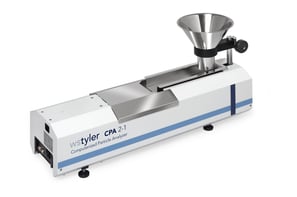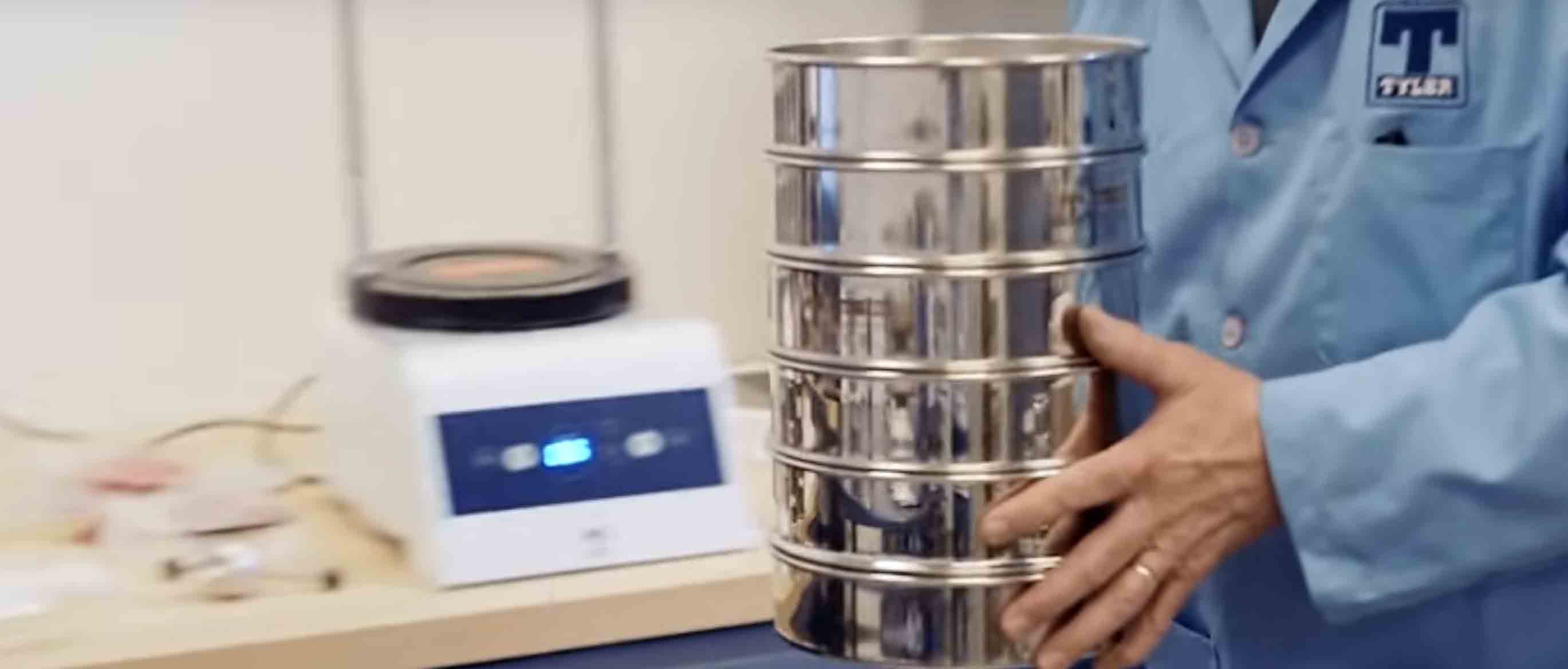How Particle Size Analysis Helps Pharmaceutical Quality Control
Pharmaceutical drugs stand out as one of the most essential resources that make the world go round. In order to produce a product that allows us to heal quicker and keep our overall health in check, pharmaceutical Lab Technicians must implement a reliable means of quality control to keep up with strict standards.
That said, where does particle analysis fit into the quality control of pharmaceutics?
W.S. Tyler has worked closely with various pharmaceutical companies for over 100 years. We take pride in knowing that we have provided solutions that allow our customers to adhere to industry standards.
In this article, we will define what pharmaceutics is, breakdown how particle analysis affects the pharmaceutical industry, and provide insight into the equipment used to carry-out particle analysis.
What is Pharmaceutics?
Pharmaceutics is best described as the process of engineering a chemical composition and converting it into an effective medication. To ensure the medication is safe for use, it is important that pharmaceutical Lab Technicians use best practices when producing medicines.
This includes conducting an accurate and efficient particle analysis.
The Importance of Particle Size in Pharmaceutical Preparation
Particle analysis is crucial to the pharmaceutical industry as it helps identify the particle size distribution of the medication.
The size and shape of the particle determine several factors, such as the dissolution of the ingredients, release rate, absorption rate, dose uniformity, and the texture of solid medicines, according to the article Particle Size Analysis in Pharmaceutics: Principles, Methods and Applications.
Particle analysis is also used to detect particulate contamination, whether it be foreign debris, precipitation, or formula incompatibilities.
Failure to implement proper particle analysis practices can harm the patients taking the medicine as it can lead to incorrect dosages.
How Is Particle Analysis Carried Out?
In the world of pharmaceutics, there are three main pieces of equipment that are used to facilitate particle analysis: Test Sieves, Air Jet Sieves, and Dynamic Image Analysis Systems. We will now provide insight into how each one is applied.
Test Sieves/Test Sieve Analysis
It goes without saying that the pharmaceutical industry is heavily regulated. This means that medicine manufacturers need to have several pieces of documentation to represent each aspect of their process in order to prove their product is what it’s supposed to be and that it was created under the proper guidelines.
This is where test sieves and test sieve analysis excel.

As test sieves undergo an intensive certification process, they can be easily traced back to a known standard. This makes quality control checks go a lot smoother as the paperwork for the test sieves is readily available for whoever is auditing the sieves.
To that end, it is recommended that pharmaceutical manufacturers use stainless steel test sieves as they present the lowest chance of material contamination.
To learn more about test sieves alloys, refer to 5 Misconceptions about Sieves and Sieve Shakers.
Why do I need to Have My Test Sieves Certified?
Having your test sieves inspected and certified allows you to make sure your sieves are meeting the standard of your particular industry. Part of the certification process is ensuring the openings in the mesh screen are accurate and consistent.
Having size openings that are too large can cause unwanted particles to pass through. On the other hand, having size openings that are too small can result in material buildup that prevents more and more particles from making their way through the mesh as time goes on.
Alpine Air Jet Sieve
The Alpine Air Jet Sieve e200 LS unit, as well as other air jet sieve variations, is another tool that is widely used in the pharmaceutical industry. 
Air Jet Sieves provide similar advantages of test sieve in the fact that there is an FDA qualification built into the software. This provides an audit trail that will tell auditors what user(s) ran the test(s), the sieve that was used, how long each test was run, and all the information needed to prove they followed the proper SOPs.
Best of all, this audit trail is completely digital, which means errors and miscalculations are seldom.
In addition, air jet sieves are a great solution for those that work with material that often becomes agglomerated. With dosage rate being such a delicate factor of the pharmaceutics, it is key to break up all particle clumps.
Failure to do so can result in dosage irregularities, which can have detrimental effects on patient well-being.
Dynamic Image Analysis System
Dynamic image analysis systems, such as a W.S.Tyler Computerized Particle Analyzer, allow manufacturers to perform particle analysis as if they were using an air jet sieve or standard test. That being said, the dynamic image analysis system takes the analysis results a step further.
Dynamic image analysis systems also provide detailed results of the shape of the particles being worked with. This is important information to have as the surface area of the particles going into the medication affect the dispersion and absorption rate of the medicine.
Additionally, dynamic image analysis systems can be used to test material in bulk, allowing for a more cost-effective operation. If you choose to conduct volume testing with a dynamic image analysis system, you should keep a stack of master sieves and test your sample at least once a month. The correlation of these results will allow you to do a size analysis.
In addition to the particle analysis benefits Dynamic Image Analysis Systems provide during creation, they can also be used to count pills during the bottling process. This is extremely beneficial for those operations that rely on speedy solutions to packaging large quantities of medicine.
It should be noted that dynamic image analysis systems have yet to be implemented in most industry standards.
Explore Particle Analysis Further
The pharmaceutical industry plays an integral role in all our lives. This is why it’s important that pharmaceutical Lab Technicians incorporate a reliable particle analysis process into their quality control routine.
Particle analysis allows the manufacturer to identify the many factors that need to be considered to guarantee the effectiveness and, more importantly, the safety of their products. These factors include the dissolution of the ingredients, release rate, absorption rate, dose uniformity, and the texture of solid medicines.
Each contributing to the well-being of those taking the medicine.
In order to carry out a reliable particle analysis process, there are three main pieces of equipment that can be used:
- Traditional test sieves allow manufacturers to provide the documentation needed to prove that they are using tools that follow known standards.
- The Alpine Air Jet Sieve e200 LS provides FDA approved audit trails that provide all the information an auditor may need, from who ran the test to the exact sieve that was used.
- The Computerized Particle Analyzer not only allows you to gather data on the size of the particles but their shape as well.
With over 100 years of experience working in the pharmaceutical industry, W.S. Tyler is here to ensure you are producing the medicine needed to keep the world in good health safely and efficiently.
To gain a better understanding of particle analysis and all of its benefits, download and review our Test Sieves, Sieve Shakers & Particle Analysis Equipment Product Guide.
Want all the latest industry trends and innovations sent directly to your inbox? Subscribe to our monthly newsletters today.
Additional Articles You May Find Helpful:
- Alpine Air Jet Sieve VS Ro-Tap Sieve Shaker
- Sieve Shaker VS Computerized Particle Analyzer (CPA)
- Alpine Air Jet Sieve VS Computer Particle Analyzer (CPA)
About Ronnie Brown
Ronnie is the Content Writer for W.S. Tyler and has four years of experience as a professional writer. He strives to expand his knowledge on all things particle analysis and woven wire mesh to leverage his exceptional writing and graphic design skills, creating a one-of-a-kind experience for customers.




